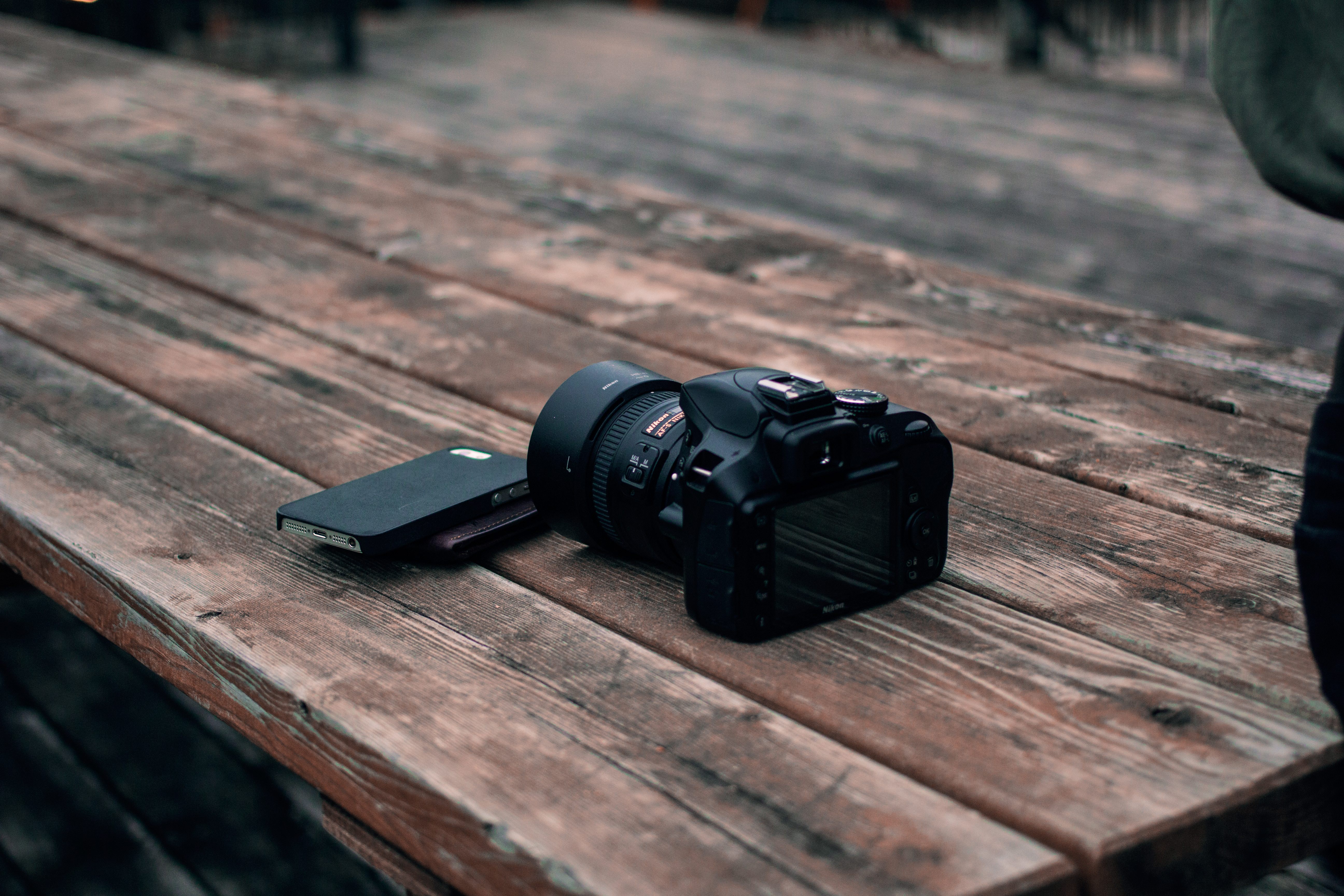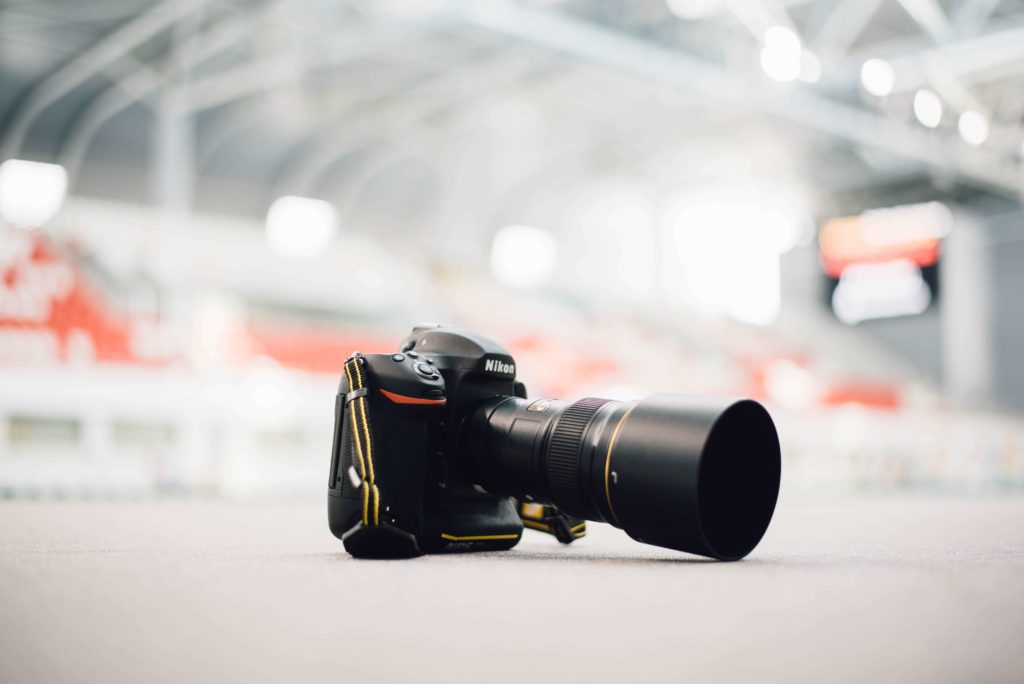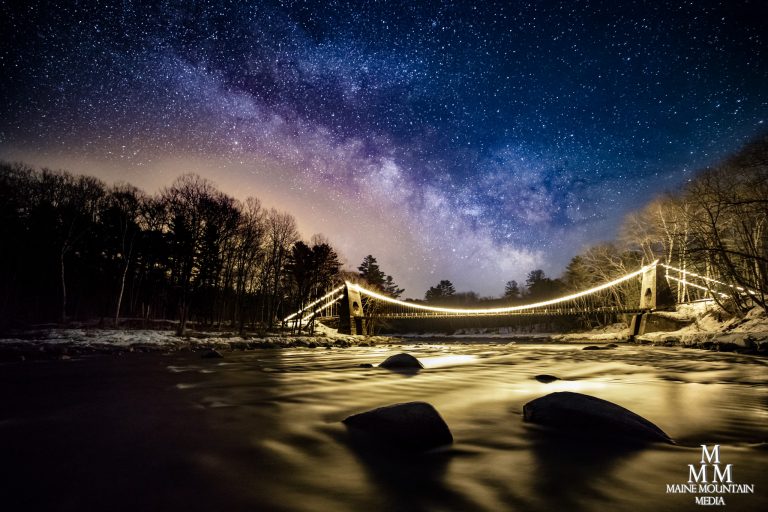DSLR Vs. Mirrorless in Photography: Which Should you Choose?

The DSLR vs mirrorless debate has been going on for several years now in the digital photography industry.
While in the past the choice between the two was obvious for professional photographers, the two are on far more equal footing today.
Up until recent years, mirrorless was not a viable option when it came to investing in a camera system, at least for serious/professional photographers. And it’s not just that the ones available were low in quality, it’s that camera manufacturers weren’t even offering them.
Advancements in mirrorless technology in recent years however, has been swift. Mirrorless technology just a few years ago was unfit for professional use but has gotten to the point where it rivals that of DSLRs. As a result, the choice between DSLR or mirrorless is not as cut and dry as it once was.
That’s not to say everyone is gonna be jumping ship immediately to make the switch over mirrorless systems. People are heavily invested not just in their camera bodies but lenses as well, making the transition an expensive and time-consuming proposition.
Regardless, mirrorless cameras are going to be the future of digital photography and are anticipated to surpass DSLR cameras sooner rather than later.
So in this article we’ll delve into the differences between DSLRs and mirrorless cameras, their pros and cons, and which type of camera is right for you.
First things first, what is the difference between DSLR and mirrorless cameras?
DSLR stands for digital single lens reflex. Single lens reflex cameras have been around far longer than their digital versions.
Single lens reflex cameras have a mirror within them, which is what allows you to see the scene that the lens is pointed at through the viewfinder. And there’s actually an additional step light goes through before hitting your viewfinder. SLRs also contain a prism at the top of the camera, which flips incoming light rays. Without this prism, you’d be seeing an inversed picture of the scene in front of you.
While that feat of human engineering smushed into a relatively small camera body is impressive, it requires a lot of moving parts that can and do fail. DSLRs present a limited framework for engineers to work within, one in which is nearing its limits in terms of how far manufacturers can take it. In turn, DSLRs have their limitations for photographers as well, which we will be discussing later in the article.
Mirrorless cameras differ in that they simply do not use a mirror for the process of getting the image from the camera’s lens to the viewfinder or LCD screen. Not having that mirror within the body of the camera gets rid of a number of physical moving pieces, allowing mirrorless camera bodies to be more compact. DSLRs’ shutter actuations are limited to the speed at which the camera’s mirror can go up and down as well, which is a limitation that mirrorless cameras don’t have.
Without the physical limitations of a complicated mirror and prism mechanism holding them back, mirrorless cameras have more potential and a brighter future in photography than their mirrored counterparts. As a result, camera manufacturers are shifting their focus to the mirrorless side of things, and as such it appears the mirrorless vs. DSLR debate will be going in favor of mirrorless from here on out.
As with any piece of photography equipment, DSLRs have both their strengths and weaknesses.
Strengths of DSLRs

Good Image Quality:
DSLRs have gotten to the point where even the entry-level models are capable of taking high-quality images. Additionally, if you want a full-frame sensor, there are currently still quite a few more options on the market to choose from if you go the DSLR route.
Instantaneous/Accurate Viewfinders:
When looking through the viewfinder of a DSLR, what you see is a great, albeit not perfect representation of what you’ll get in your exposure (the only exposure indication you get is from the meter and some DSLR viewfinders don’t have 100% full coverage). But there’s no lag and you’re seeing what’s really coming through the lens of the camera, not a digital replication. Looking through the viewfinder of a DSLR does not show you exposure value aside from the camera’s meter, but it does show how your depth of field will come out.
Fast Focusing:
DSLRs are very quick and accurate to focus. They do so in low light as well.
Easy to access and customizable controls:
What with DSLRs being made to accommodate the needs of professional and dedicated amateurs alike, they have the controls needed to handle just about any situation. And those controls can be modified to improve your user experience, whether you need to change them because of the size of your hands, make a repeated actions more comfortable, to focus with the back button of the camera, or for whatever other reason you see fit.
Lens Selection:
Interchangeable lens DSLR systems have been around for far longer than that of mirrorless systems, and so any given camera manufacturer usually has a much larger lens selection for DSLRs.
Construction:
DSLRs are solidly constructed, usually out of magnesium alloy, and can take a good deal of abuse.
Battery Life:
You really can’t beat DSLRs in terms of battery capacity at this point. DSLRs are forced to be big to accommodate all the moving analog parts. One up side of that is that there’s room to dedicate large compartments for batteries. DSLRs often have batteries that are rated to handle 1,200 shots per charge, which I’ve actually found to be a conservative estimate in my experience with my DSLRs.
This is one consideration of the DSLR or mirrorless choice that still goes decidedly in favor of DSLRs.
Limitations/Weaknesses of DSLRs
Complex Construction:
Due to the complex physical components of DSLRs, they’re prone to all sorts of breakdowns that can potentially lead to costly repairs over the life of the camera.
Size/Weight:
DSLRs are some of the biggest, bulkiest, heaviest cameras on the market. This is a big issue I take into consideration and will likely be the reason I eventually switch over to mirrorless cameras from my big DSLRs. DSLRs may not feel all that heavy in the hand if you just pick one up briefly, but carry one around for a day and you start to feel the burn; hands, fingers, wrists, shoulders can all be subject to aches and pains. Wear two DSLR cameras around the shoulders for a wedding photography job all day and you can be left feeling like you got whooped in an MMA fight.
Noise:
DSLRs have to flip their mirror up and down during every shutter actuation. This results in a loud and obnoxious click. It’s perfectly fine when you’re in a situation that doesn’t call for silence and actually can be a good thing in that it confirms to you that the camera fired. However, it’s very inconvenient when you want to be discreet. DSLR manufacturers have been offering ‘silent modes’ for a while now which is a positive development, but these modes still do not rival the near-silent shutters of mirrorless cameras.
Lack of Live Preview:
With DSLRs, you can get a somewhat accurate idea of exposure from the meter, but meters can be fooled and you don’t actually see how light or dark your photo is going to turn out. With mirrorless cameras, you do get that information in an electronic viewfinder or LCD screen – you don’t even have to look at the meter if you don’t want to.
Ineffectual Live View:
DSLRs have notoriously bad live view modes – where instead of seeing the scene through a viewfinder, you see it on the back of the camera on the LCD screen. Considering a DSLR’s mirror must block the sensor temporarily during the process of taking an exposure, that leaves the LCD screen completely black and without information momentarily. It’s not completely debilitating, but that lag in between being able to see what the lens is seeing while the mirror flips up and writes a file to the camera’s card really adds up.
If you’re trying to fire off several shots in quick succession, you might find yourself pulling your hair out if you’re using an older mirrorless camera. The higher end cameras that have come out recently have been improved in this regard but still will just not be able to compete with the live view on a mirrorless camera.
While DSLRs have their strengths and weaknesses, so too do mirrorless cameras, which is what the next section will cover.
Strengths of Mirrorless Cameras

Mirrorless cameras have lagged behind DSLRs in terms of their capabilities but they have a lot going for them and the momentum in the DSLR vs. mirrorless question is with mirrorless at this point.
Smaller in Size and Weight:
Mirrorless cameras don’t need to house a mirror and pentaprism setup, which cuts down on weight and frees up space at the top of the camera. For cameras with APS-C sized sensors, the shorter flange distance and lack of mirror mechanism allow camera manufacturers to construct them with very minimal size and weight.
That goes for both mirrorless camera bodies and their lenses. For the larger full-frame sensors, keeping the size to a minimum, especially the lenses, is another story but still have the advantage over DSLRs in this regard.
Quiet Shutter:
Without the mirror to slap around in the camera, mirrorless camera shutters are able to be almost silent. Some mirrorless cameras even have fake electronic shutter sounds that you can turn up and down so you know when the camera took an exposure. I’ve owned a mirrorless camera, the x100s, that I needed to do this with.
FPS Rate:
The FPS speed of mirrorless cameras can go much faster because mirrorless shutters are not handicapped by a mirror having to flip up and down every time a shot is taken. Some mirrorless cameras are already getting into the 20+ FPS range, unthinkable for DSLRs.
Less Camera Shake:
The mirror in DSLR cameras goes through a forceful movement that causes vibration and for the camera to physically shake. This makes it necessary to use a tripod sooner when shooting with slow shutter speeds with DSLRs. Again, not having that shutter mechanism in mirrorless cameras helps a lot in regards to camera shake.
Less Dust and Oil:
The movement of mechanical parts causes significant air movement within a DSLR. With mirrorless cameras, that’s less of an issue. The result is mirrorless cameras being less prone to getting dust and oil flung on to the sensor.
The sensors of both mirrorless cameras and DSLRs can and do get dust and/or oil on them, which can lead to spots on your pictures. However, in my experience, the sensors of my mirrorless cameras have stood up to the elements far more effectively than with my DSLRs.
Easier to Clean Sensors:
In order to clean a DSLR, you have to turn it on to its cleaning mode, which keeps the mirror flipped out of the way. This usually requires having a fully-charged battery. With mirrorless cameras, you don’t have a mirror in the way so the sensor is fully exposed for cleaning purposes once you’ve dismounted a lens.
Lower Cost:
We haven’t necessarily seen mirrorless cameras beat DSLRs in terms of cost yet, but they will come out ahead in this regard soon. Mirrorless cameras are easier to produce because they have less moving technical parts.
Representative Live Preview:
The live preview of mirrorless cameras is far more true to what you’re actually going to get if you click the shutter button than what you see when looking through the viewfinder of a DSLR. You’re basically seeing exactly what a RAW or JPEG file is going to look like when you take an exposure. You see your depth of field, exposure (literally, as in how light or dark it will come out), and your white balance.
Related: What White Balance to Use for Night Photography
More Reliable Autofocus:
DSLR cameras with phase detection sensors can become out of whack if the sensor gets misaligned with the camera’s secondary mirror. Most new mirrorless cameras that are coming out have both contrast and phase detection sensors built directly on the sensor itself, eliminating this problem of misalignment that DSLRs can run into.
Electronic Viewfinders:
Optical viewfinders can be great, but there are multiple advantages that a good electronic viewfinder has in certain conditions. Here are a few that come to mind:
Brighter Display:
In dark situations, electronic viewfinders are the way to go. They’re made up lights and are recessed back in a dark viewfinder, which makes things easier to see.
More Focus Points:
DSLRs can’t have their autofocus systems overlaid directly on the sensor, so camera manufacturers are forced to cram their autofocus points around the center of the frame. This is fine for the focus-and-recompose technique, something I do all the time and is my preferred method of focusing with DSLRs. However, it’s not a perfect method, especially if you’re shooting at a wide aperture because the focus plane shifts slightly after you’ve recomposed.
So while DSLRs are usually missing focus points around the edges of the frame, that’s not the case with mirrorless cameras. Contrast and phase detecting autofocus sensors can span the entire sensor, meaning you get full autofocus point coverage across the frame. This is really useful if you want to do things like position a subject in the edge of a frame at a shallow depth of field.
100% Viewfinder Coverage:
With some DSLRs, you don’t get full coverage of what’s going to be in your frame. Coverage is not the same across all DSLRs – cheap, entry level DSLRs are likely to have less coverage while the higher end DSLRs the issue is less pronounced. But for obvious reasons, not having full coverage of what your final result is going to be is a big issue. It’s far easier to manufacture electronic viewfinders with 100% coverage, and as far as I know I haven’t heard of any mirrorless cameras that don’t have full coverage.
Digital Zoom Feature:
With DSLRs, you can take a picture and then zoom into the photo afterwards to check and see if you locked focus. While this is a good feature, mirrorless cameras can do it as well. And on top of that, they can actually do this as you’re looking through the electronic viewfinder. Being able to zoom in while you’re looking through the EVF is a huge improvement in my opinion, as you can check focus before taking the picture, not after the fact when you can’t change anything.
Face Detection:
Because of how mirrorless cameras have their autofocus systems integrated onto the sensor itself, they’re able to offer features like face detection and eye detection. These are really cool features that are likely to be expanded upon and improved in the near future. This can be really useful in certain situations, like doing portraits or group shots in dimly lit areas, where focusing and recomposing can easily lead to shifts in focal plane and throw your shot out of focus.
Now that we’ve covered hopefully the majority of mirrorless camera strengths, it’s time to take a look into where they fall short.
Weaknesses of Mirrorless Cameras
Low Battery Life:
This is still a huge issue for mirrorless cameras. On the good end, mirrorless cameras are rated for 300-some-odd shutter actuations. Having power run consistently to either an LCD screen or electronic viewfinder really sucks power. Then that’s combined with the fact that mirrorless cameras have less space for batteries and thus are forced to have lower capacity batteries.
That’s a recipe for having to carry around multiple extra batteries. My Ricoh GR is somewhat of an extreme example because it’s so small, but it goes through batteries like nobody’s business.
I strongly believe that this will be dealt with as technology advances. The camera companies will find ways to minimize battery power drained from LCD screens and other such technologies to more efficiently make use of battery power.
Electronic View Finder Speed:
Considering electronic viewfinders show a digital representation of what’s seen through the lens, it’s important that you be able to see it in real time, with no lag and no lag in between writing images to a memory card. Unfortunately, at this point that’s not necessarily the case, although electronic viewfinders have made a huge improvement over the electronic viewfinders of just a few years ago. Digital technology develops at a rapid pace, and this issue will likely be resolved entirely in the coming years in step with increases in processing power.
Subject Tracking:
Subject tracking has been substandard in mirrorless cameras up to this point, but now that manufacturers have been able to implement hybrid autofocus systems directly on the camera sensor, things are turning around for mirrorless. This is another point of the mirrorless vs DSLR debate in which mirrorless is just about tied with DSLRs and will soon completely surpass DSLRs in.
Size:
Back when mirrorless cameras started coming out and started being marketed as the new big thing in photography, a point that manufacturers really pressed is how much smaller they would be.
Well, as it turns out, when you put a full-frame sensor in a mirrorless camera body like with the Sony A7 series, you still end up with outrageously big lenses at longer focal lengths. While mirrorless cameras can be a lot lighter than DSLRs, their bodies and lenses must still account for the physics of optical design.
As you can see, there just aren’t all that many cons for mirrorless camera designs and they are where the potential lies in future camera technology.
Which Should You Buy – DSLR or Mirrorless?
When it comes to the DSLR vs mirrorless debate, I don’t think there’s much of a debate anymore. Mirrorless is the way to go moving forward.
Mirrorless cameras have a huge, untapped potential, whereas DSLRs are at the point where their ceiling has almost been reached already.
While I’d be happy to say go out and replace all your gear and buy into a mirrorless system, I wouldn’t necessarily recommend that at this point. I do think that mirrorless cameras will surpass DSLRs in every way in the not-too-distant future. Whether that happens in a year, five years, ten years down the line remains to be seen.
I don’t think it’s necessary to jump ship from DSLRs just yet, although I see no harm in it either. There are several very capable mirrorless camera systems on the market right now as of this writing in July 2017. Some of them still fall slightly short of the available DSLR systems but are extremely close to getting there.
Sony’s full-frame mirrorless lineup, for example, is already giving DSLRs a run for their money. In pretty much every respect, the latest A7 body is beating comparable DSLRs. It might not make sense for some photographers to switch over yet, like for sports photographers who need long telephoto primes with wide apertures, but it’s only a matter of time for Sony to fill in those gaps of their lens lineup.
Here’s my take on the DSLR or mirrorless choice:
If you’ve got a DSLR system, there’s no harm in either sticking with it or switching over to mirrorless. If you’ve got the budget for it, then go for it.
If you’re just starting out and wondering, “should I go mirrorless or DSLR?” Then I recommend starting out with mirrorless. With mirrorless, you get a camera system that is at least close to on par with a DSLR and you can rest easy that the system you buy into will be relevant for years to come. It makes more sense to think of buying into a camera system as an investment, and a mirrorless system is the investment with a higher ceiling and more potential.
Are you going through the DSLR vs. mirrorless debate? Let me know in the comments below.






